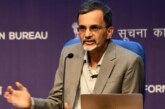The Holy River of Ganga runs its course of over 2500 kms from Gangotri in the Himalayas to Ganga Sagar in the Bay of Bengal through 29 cities and about 48 towns. It is a river with which the people of India are attached religiously, spiritually and emotionally.
The river water once said to be purer than anything in this world is now no more pure. Its sanctity has been played with in an unbridled way and such a large scale of human intervention has destroyed the natural balance of the river. But a concrete step has never been taken to contain the levels of pollution in the water.
The plight of Ganga is not new and this predicament has been persistent for many years now. The river is contaminated from the various towns that have grown up on the banks of Ganga and every one of them is equally responsible for this. Industrial waste, untreated sewage, chemical and plastic wastes, human and animal remains etc have polluted the river beyond repair
Factors Responsible for the Plight
The pollution of Ganga is a complex issue that requires a multi-pronged approach to address. Along with the failure of Ganga Action Plan (GAP), other factors like religious faith that holy Ganga can never be polluted; people’s apathy and lack of political will are also responsible for the plight of Ganga.
Religious Belief
There is a widespread belief that Ganga is a holy river and can never get polluted. The popular belief that the holy river Ganga can be dirty but never be polluted is an expression of a deep cultural belief of a large religious community. This concept of being ‘dirty’ and being ‘polluted’ carry significantly different meanings altogether, which reinforces another perception that Ganga has self-cleansing capacity’. These perceptions shall perpetuate the ignorance about the ‘pollution’ of the river and, thus, breed apathy in the minds of the local people about pollution abatement works.
It is absolutely true that there is no place of any question in matters of religious faith. But scientific approach speaks about analysis based on given facts. It is the need of the hour to popularize scientific outlook in the society on issues particularly related to pollution of Ganga. The human mind works in pressure; hence there should be some pressures like reward, award and penalty to motivate people, especially by building
their capacity.
Menace of Pollution
Sewage is an important source of pollution and accounts for about 75% of the total pollution from all point-sources. Urban settlements of different sizes, contribute most of the sewage related pollution in the river Ganga. Further, the sewage problem continues to aggravate despite the considerable emphasis by the Ganga Action Plan (GAP I and GAP II) on diversion and treatment of urban sewage.
In the Ganga basin approximately 12,000 million litres per day (mld) of sewage is generated, for which presently there is treatment capacity of only around 4,000 mld. Approximately 3000 mld of sewage is discharged into the main stem of the river Ganga from Class I and II towns located on the banks, against which treatment capacity of about 1,000 mld has been created till date.
Broadly speaking, despite significant failure of the Ganga Action Plans or GAPs, there has not been any strong disapproval on the part of the citizens, their representatives from the urban areas on the banks of the river and its tributaries. The failures are rooted in lack of effective extraction of accountability of the governing agencies. However, the problem is not restricted only to lack of appropriate mechanisms for extraction of accountability. The problem also lies in general apathy of the urban citizens and their representatives who are unwilling to extract accountability. This apathy seems to be rooted in perception of remoteness and lack of attachment that common urban citizen harbor toward the river. As a result of this apathy in urban citizens, the political parties do not find the issue of pollution in Ganga worth investing their time and resources as there is no political dividend to gain.
Lack of Political Will
Popular support is the principal source of power for political parties. Hence as part of electoral politics, political parties are always sensitive and supportive of perceptions of the dominant sections of the electorate. However, going by the past behavior of political parties, it can be surmised that no political party is really interested in Ganga as it does not promise votes to them. In a democratic set up of governance it is impossible to clean the river unless there is a strong political willingness. The people should also ask political parties to include Ganga in their political agenda. The recent parliamentary elections have witnessed some political parties focus on Ganga and they reaped good dividends. It is yet to be seen as to how seriously these parties act on this promise.
Lack of Good Governance
Finding a concrete and lasting solution to make Ganga free form pollution is handicapped by the lack of good governance. There are multiple authorities entrusted with the task. The first phase of tackling pollution in the river Ganga started with the enactment of the Water Pollution Act of 1974, by setting up of elaborate institutional arrangements including the central and state pollution control boards, armed with significant legal powers. However, till date we do not have a single case of a river or tributary that has been cleaned up due to the efforts of pollution control boards.
In 1993, the GAP Phase-II was launched and in December 1996 it was merged with the National River Action Plan. The National River Conservation Authority is chaired by the Indian Prime Minister and includes ministers of Indian central government and Chief Ministers of all Ganga basin states. While it was apparent that the GAP and River Action Plans are failure, no credible attempt has been made to understand the reasons for failure when supervision was supposed to be from the highest quarters of the Indian government.
It has also observed that the urban local bodies (ULBs) are neither capable nor motivated enough in matters related to Ganga pollution. Various experts and academics often champion the cause of decentralization of funds, functions, and functionaries to the urban local bodies. This, according to some of them, is the panacea for improving governance of municipal public services. However, there is an increasing perception that the ULBs are neither capable nor motivated to take-over and discharge the governing functions – in efficient, effective, and timely manner – especially those related to the sewage and solid waste management.
Apathy of Business Community
The apathy of the business community is another contributing factor for the pollution of River Ganga. For example, Kanpur has a large business community of owners of small units such as tanneries, textile units, and textile dyeing units. According to some media reports, apart from the big tanneries, the other small informal units do not treat their effluent. Even bigger tanneries do not treat their effluents in order to cut down their costs as far as they could. With strong backing from political and criminal elements, these sections try either to co-opt the functionaries of pollution control agency through enticements or pressure, or create barriers to their efforts to monitor and enforce regulations.
Lack of adequate capacities and resources with the pollution control agency and lack of effective mechanisms to ensure its autonomy and accountability are the factors that allow this interference. Thus, the misalignment of interests of the business community, and the lacunas in the policy instruments, together, creates serious threats to the efforts to curtail pollution in river Ganga.
WAY AHEAD
The chronic problem of pollution in the river Ganga requires a comprehensive range of solutions that are synergistically supportive of each other. It needs to be noted that the problem essentially is rooted in the governance crisis and no amount of inputs for technical, financial, or capability / knowledge enhancing will be able to reduce these core governance maladies. This is not to deny the need or utility of the technical, financial or knowledge inputs, but to warn against naiveté that prompts a search for simplistic solutions that often serve the vested interests rather than the cause of clean river Ganga.
Over the past two decades more than Rs 40,000-crore has been spent on cleaning river Ganga without attaining any tangible outcome. Perhaps undue investment on technical aspects like creating sewage treatment plants to prevent the pollution in river Ganga without involving people living on the banks of the river are the reasons for it. It is worth mentioning here that no action plan of this magnitude can succeed without the involvement of the people and the civil society.
The role of civil society is indispensable in monitoring the progress of work being done by local authorities through social audit. The successful completion of the river cleaning programmes for rivers like Thames, Rhine and Danube in Europe could be facilitated by the increasing involvement of the civil society. Similar modalities are called for in India as well.
India Water Foundation, a non-profit civil society, engaged in generating heightened awareness among the people about water and environment related issues, is engaged in PAPP (People’s Awareness and People’s Participation) activities in the JICA-assisted Ganga Action Plan Project at Varanasi, UP. Our experience for the past couple of years shows that capacity-building and outreach programmes do have salutary impact in making River Ganga pollution free.
(By Mrs. Shweta Tyagi)



